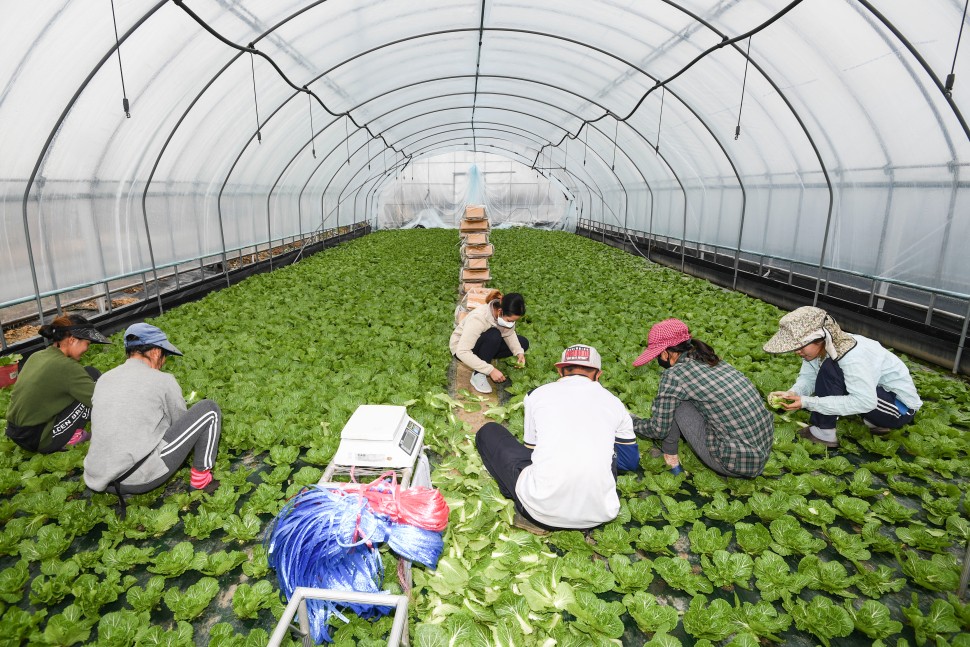[Sept] Korea to invite more migrant workers to relieve labor shortage
Date Sep 21, 2022
 Migrant workers pluck cabbage at a farm in Chungju, Chungcheongbuk-do Province.
Migrant workers pluck cabbage at a farm in Chungju, Chungcheongbuk-do Province.
The Korean government will invite more than 50,000 migrant workers to Korea in the remaining months of this year, as part of its effort to deal with labor shortages in the shipbuilding, manufacturing and service industries.
According to the Ministry of Employment and Labor, the number of job vacancies stood at 230,000 as of June, the highest since February 2018.
The labor shortage stems from a combination of several factors: poor working conditions, workforce transition into contact-free services and entry restrictions facing migrant workers amid the COVID-19 pandemic.
Poor working conditions, such as a dangerous work environment and low pay, especially for subcontractors, have led to workers avoiding jobs in the shipbuilding and basic manufacturing industries.
In the service industry, some 20,000 workers at restaurants and 30,000 drivers of busses or taxis have lost jobs since the start of the pandemic, while the number of delivery workers jumped by around 80,000, or 22 percent. Even though demand for in-person services has resumed amid the eased social distancing rules and a rebound in customers, many of the workers who had left the related jobs are not returning, citing substandard working conditions.
Another factor is delays and restrictions on foreign workers’ entry to Korea, following border closures, visa issuance restrictions and flight cancellations amid the global health crisis. The number of foreign workers here has plummeted below 35 percent of the pre-pandemic level.
To relieve the labor shortage, the labor ministry is making various and tailored efforts.
First, it is planning to secure the necessary number of migrant workers as soon as possible. Some 42,000 people, who already received E-9 non-professional employment visas from 2020 to the first half of this year, have still been unable to come to Korea due to travel restrictions and other reasons, and the government will bring all of them here by the end of this year, as well as an additional 21,000 who are scheduled to get their visas in the latter half of the year. Under the plan, the number of migrant workers is expected to reach around 264,000 by the end of this year, nearing the pre-pandemic level of 277,000 at the end of 2019.
The government will also expand the quota for migrant workers in the manufacturing, agriculture and shipbuilding industries and set next year’s quotas in October, two months earlier than their usual December release date, so that workers can enter the country as early as January.
To encourage domestic workers to enter the shipbuilding industry, the ministry plans to expand the number of workers eligible for government subsidies in the sector. It will also increase financial support for new workers in basic manufacturing.
“As the fundamental cause of labor shortage in these sectors is poor working conditions and wage disparity, we’ll continue to make efforts to improve the conditions, reduce the disparity and reform the labor market,” Employment and Labor Minister Lee Jung-sik said.
**If you have any questions about this article, feel free to contact us at kocis@korea.kr.**

The Ministry of Culture, Sports and Tourism's "Korea Here & Now" work can be used under the condition of "Public Nuri Type 1 (Source Indication)."




